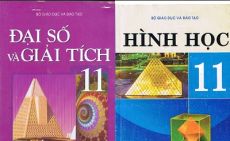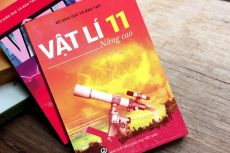Traditionally, Americans and Asians have very(20) _____ideas about love and marriage. Americans believe in ‘romantic’ marriage – a boy and a girl are(21) ____ to each other, fall in love, and decide to marry each other. Asians, on the other hand, believe in contractual marriage – the parents of the bride and the groom decide on the marriage; and love – if it ever develops – is supposed to follow(22) _____, not precede it.
To show the differences, a (23)______was conducted among American, Chinese and Indian students to determine their attitudes (24)_____ love and marriage.
(21)...........................
Suy nghĩ và trả lời câu hỏi trước khi xem đáp án
Lời giải:
Báo saiĐáp án C
Giải thích: be attracted to: bị thu hút.
Ở đây không thể married to vì đằng sau đã có marry to each other.
Câu hỏi liên quan
-
It is difficult to write rules that tell exactly when we should apologize, but it is not difficult to learn how. If we have done something to hurt someone’s feeling or if we have been impolite or rude, we should apologize. An apology indicates that we realize we have made a mistake, and we are sorry for it. It is a way of expressing our regret for something. When we apologize, we admit our wrongdoing, usually offer a reason for it, and express regret.
The simplest way to apologize is to say “I’m sorry”, but often that is not enough. Let’s take a common situation. Mario is late for class and enters the classroom, interrupting the teacher in the middle of the class. What does he do? The most polite action is usually to take a seat as quietly as possible and apologize later. But if the teacher stops and waits for him to say something, he could apologize simply “I’m sorry I’m late”, ask permission to take his seat, and sit down. Naturally, more than this, a reason for the tardiness, is needed, but this is not the time or the place for it because he has already caused one interruption and doesn’t need to make it any longer or worse than it already is.Which of the following is NOT mentioned in the passage as the most polite action in Mario’s case?
-
TRANSPORT IN THE CITY
Transport plays an important role in our daily lives and in the quality of life in our city. Moreover, the individual decisions we make when we choose how to (38)_______our destination can have an impact (39) _____other people – longer traffic queues, worsening air quality, greater number of accidents and health problems. Providing more transport options will create a transport system that is safe, clean and fair.
Increasing use of the car has led to greater (40) ____ of the impact it has and the real cost to us – for our health, for the economy and for the environment. We want our city to become a successful, cosmopolitan city by the sea, (41) _______people can enjoy a high quality of life in a pleasant environment. To (42)_______this we need to make sure everyone has access to the services and facilities they need, through a choice of as many different means of transport as possible.
(42).................................... -
Read the following passage and mark the letter A, B, C, or D on your answer sheet to indicate the correct word or phrase that best fits each of the numbered blanks from 31 to 35.
Easter is a holiday in late March or early April, the first Sunday after the first full moon after 21 March. Many people (31)_________it with their family or have a short holiday/ vacation. It is also an important Christian festival. Easter Sunday, the day of the Resurrection, is the end of Lent (32) ________ the most important date in the Christian year. Many people who do not go to church at other times go on Easter Sunday. It was once (33)_________for people to wear new clothes to church on this day. Women (34)_________new hats, called Easter bonnets. Today, people sometimes make elaborately decorated Easter bonnets for fun. A few people send Easter cards with religious symbols on them or pictures of small chickens, lambs, rabbits and spring flowers, all traditionally associated (35)_________Easter.
(32)................................ -
The Census Counts!
Every ten years there is a national census to count the number of people. The census counts the number of people in each area, the number of men and women, their ages, their profession, their family size and status. The census is the only way to count everyone. Its results are used by a great many people and are available to everyone. The census is useful; it helps to work out present and future needs for housing by seeing how many people are housed now, or the sizes and ages of their families. In addition, the size of annual grants made by the Government to public services depends largely on the numbers and needs of people in the area provided by the census. Furthermore, the census shows how many people have moved from one area to another and how the number of the local work force is changing.
The census is taken in order to provide the figures about the nation as a whole. It does not give information about any named person, family or household. Therefore, names and addresses are needed on the forms but they are not fed into the computer. After the census, the forms with the names on are locked away and will not be released to anyone outside the Census Office for 100 years. The answers people give on their census forms will be treated in strict confidence. Everyone working on the census is sworn to secrecy and can be sued if he or she improperly reveals information.
Which of the following does the census not take interest in?
-
Read the following text and circle the best answer among A, B, C, or D on your answer sheet for the questions from 44 to 50
HISTORY LESSONS
“History is the version of past events that people have decided to agree upon"
Naponeon Bonapart
Think of three historical figures. What do you know about them? Where did you get your information from? The chances are that you either read it somewhere or someone who read it somewhere told you about it. Did you ever think about who wrote down these facts? How can you be sure that they are true? The thing is, many historical “truths” are historical myths.
Let's take some examples. In America, 4th July is Independence Day, the most important day in the American Calendar, which Americans celebrate with parades and fireworks. It was on 4th July, 1776 that Congress approved the Declaration of Independence. It was a good start. However, the struggle continued for another seven years after this, with some of the most brutal fighting in the whole war, as King George III was not willing to grant America total Independence, which was the only arrangement that the American leaders would accept. So the fighting continued. The first draft on a Treaty of Peace was signed in November 1782 and in February 1783 the King officially announced that the war would soon be over. This led to the signing of the Treaty of Paris on 3rd September that same year.
Think about the discovery of America. What's the first name that comes to mind? More than likely it's Christopher Colombus.Was America really discovered by him? He had set out to reach Asia and that's where he thought he was when he came to America. But there were many people there before him. The first ones were certainly the Native Americans, thousands years before 1492. Where had they come from? Even the Vikings had made a number of expeditions, with Leif Eriksson landing there in around 1000 A.D. Perhaps Amerigo Vespucci was the discover of America. After all, unlike Columbus before him, he was the first fifteen - century explorer to realise where has was, or rather, where he definitely wasn't. so, maybe the word “re-discover” is more accurate when it comes to Columbus, if history is to give him any credit at all.
Everyone believes such historical "facts” because, like you, they got them from what they thought was a reliable source. But how can such things be written down in the first place? One of the reasons must be that history is seldom “cut - and - dried”. The events are often complicated and messy. The achieving of American independence was a lengthy affair. Presumably 4th July was chosen as the date to celebrate because it was seen as more significant than the date of the actual end of the war. Another reason is that such myths always contain a grain of truth. Columbus was not the first person to travel to America, but he was the first fifteenth-century explorer to go there. His “re-discovery” was, from a historical point of view, extremely significant for Europe since his voyages opened up large-scale commerce between Europe and America.
History has traditionally been written by the winners. If the conquered indigenous peoples had written the history of the discovery of the New World, it would most probably have been very different, but not necessarily objective: the point of view of the conquered can be just as biased as the point of view of the conqueror. But that is not the whole story. The writing of history depends not only on the "side” the writer is on, but also on the culture and attitudes of the era it is written in.
History is always subjective. So, remember: when you read history, take it with a pinch of salt.America was not actually free from British rule until __________.
-
Read the following passage and mark the letter A, B, C or D on you answer sheet to indicate the correct answer to each of the questions.
The UK has a vast variety of higher education opportunities to offer students with over 100 universities offering various degree programs for students from the UK and around the world. In the UK about one-third of all students go on to some form of higher education and this number is well over 50% for students from Scotland. This makes competition for places very fierce and so it is advised to apply early for courses.
In the UK most undergraduate degree programs take three years to finish; however, the "sandwich course" is increasing in popularity, which is four years and involves one year in the workplace (normally in your third year). In Scotland, the courses are four years in length for undergraduate programs.
For graduate or masters programs, they are generally shorter in length and undertaken after graduation of your undergraduate program. Some professional degrees like medicine, veterinary, law, etc. have longer programs that can be as much as five years.
From 2007, universities in the UK are allowed to charge students from the UK up to £3,070 per year (depending on the school and location). For students from the EU, you will also only have the pay the same fees as students from the UK, but international students from the of the world will have to pay the full school fees which will vary depending on the school. These fees for international students can range anywhere from £4,000 per year right up to £18,000 per year or more.
Choosing the right school is dependent on a large number of factors such as:
• Location of the school?
• How much it costs?
• Size of the school?
• Access to home comforts? Place of worship, home foods?
• Courses available? Question 40. The word "which" in paragraph 2 refers to _________.
-
Read the passage carefully, then choose the correct answer.
Asia-Pacific Economic Cooperation (APEC) is a forum for 21 Pacific Rim countries or regions (styled 'member economies') to discuss the regional economy, cooperation, trade and investment. The membership is claimed to account for approximately 41% of the world's population, approximately 56% of world GDP and about 49% of world trade. The activities, including year-round meetings of the members' ministers, are coordinated by the APEC Secretariat. The organization conducts the APEC Economic Leaders' Meeting (AELM), an annual summit attended by the heads of government of all APEC members except Taiwan under the name Chinese Taipei, which is represented by a ministerial-level official due to China's insistence. The location of the summit rotates annually among the member economies, and a famous tradition involves the attending leaders dressing in a national costume of the host member. The first APEC Economic Leaders' Meeting occurred in 1993 when US president Bill Clinton,' after discussions with Australian prime minister Paul Keating, invited the heads of government from member economies to a summit on Blake Island. He believed it would help bring the stalled Uruguay Round of trade talks on track. At the summit, some leaders called for continued reduction of barriers to trade and investment, envisioning a community in the Asia-Pacific region that might promote prosperity, through cooperation. The APEC Secretariat, based in Singapore, was established to coordinate the activities of the organization. In the summit of 1994 in Bogor, APEC adopted the Bogor Goals that aimed to reduce trade tariffs to below five percent in the Asia-Pacific region, by 2010 for industrialized economies and by 2020 for developing economies. In 1995, APEC established a business advisory body named the APEC Business Advisory Council (ABAC), comprised of three business executives from each member economy.It can be concluded from the last paragraph that in the future ____
-
Read the following passage and choose the best answer for each blank.
Under the global "health for all" strategy, WHO (the World Health Organization) and its members have placed special emphasis (26) ________ the developing countries. Nevertheless, the benefits of WHO's international health work are benefited by all countries, including the most developed ones. For example, all nations have benefited from their contributions to the WHO programs that led to the global (27) ________ of smallpox and to better and cheaper ways of controlling tuberculosis. (28) ________ is a key word in WHO's programs. The organization believes that immunization, (29) ________ prevents the six major diseases of childhood -diphtheria, measles, poliomyelitis, tetanus, tuberculosis, and whooping cough, should be (30) ________ to all children who need it. WHO is leading a worldwide campaign to provide effective immunization for all children in (31) ________ with UNICEF. Provision of safe drinking water for all is one of the objectives of the International Drinking Water Supply and Sanitation Decade proclaimed by the UN General Assembly in 1980 and (32) ________ by WHO. WHO is also active in international efforts to combat the diarrheal diseases, killers of infants and young children. The widespread introduction of oral rehydration salts, together with improved drinking water supply and sanitation will greatly reduce childhood mortality from diarrhea.
WHO's program for primary health (33) ________ comprises eight essential elements: education concerning prevalent health problems and the methods of preventing and controlling them; promotion of food supply and proper nutrition; maintenance of (34) ________ adequate supply of safe water and basic sanitation; provision of maternal and child health care, including family planning; immunization against the major (35) ________ diseases; prevention and control of locally endemic diseases; appropriate treatment of common diseases and injuries; and provision of essential drugs. These eight elements were defined in the Declaration of Alma-Ata, which emerged from the International Conference, on Primary Health Care in 1978.
(35) ________
-
Fill in each numbered blank with one suitable word or phrase.
The United Nations Children's Fund, or UNICEF, was (1) _____ by the United Nations General Assembly on December 11, 1946, to provide emergency food and (2) _____ to children in 'countries that had been devastated by World War II. In 1953, UNICEF became a permanent part of the United Nations System and its name was shortened from the (3) _____ United Nations International Children's Emergency Fund but it has continued to be known by the popular acronym based on this old name. (4) _____ in New York City, UNICEF provides long-term humanitarian and developmental assistance to' children and mother in developing countries. UNICEF is currently focused (5) _____ five primary priorities: Child Survival and Development, Basic Education and Gender Equality, including girl's education, child protection from (6) _____, exploitation, and abuse, HIV/AIDS and children, and Policy advocacy and partnerships for children's rights. Related areas of UNICEF action include early childhood development, adolescence development and participation; life skills based education and child rights all over the world. A (7) _____ funded agency, UNICEF relies on contributions from governments and private (8) _____. Its programs emphasize developing community-level services to promote the health and well-being of children. Recently, UNICEF has begun partnerships with world-class athletes and teams to promote the organization's work and to (9) _____ funds. UNICEF greeting cards are sold worldwide to support efforts on behalf of children creating a better world where children are happy, healthy and live in dignity. UNICEF selects suitable paintings for reproduction from contemporary artists. Total income to UNICEF for 2006 was 2,781,000,000. UNICEF was (10) _____ the Nobel Peace Prize in 1965 and Prince of Asturias Award of Concord in 2006. UNICEF is present in 190 countries and territories around the world.
(4) _____
-
There is a strange paradox to the success of the Asian education model. On the one hand, class sizes are huge by Western standards with between 30 and 40 students per class, in countries like Japan and Korea. On the other hand, school children in developed Asian economies rank among the highest in the world for academic achievement in the areas of science and mathematics, especially on standardised tests. Meanwhile, British secondary school students fail to shine in conditions most educational researchers would say are far more likely to help them succeed.
Classroom management seems to be easier in places like Korea, and perhaps lessons are more effective as a direct consequence. After all, we are only too aware of the decline in discipline standards in our own school: belligerent and disrespectful students appear to be the norm these days. Teachers in Britain seem powerless to control what happens anymore. Surely this situation cannot create a very effective learning environment, so perhaps the number of students is far less relevant than is the manner in which they conduct themselves.
But there are other factors to consider, too. There is the home environment. The traditional family unit still remains relatively intact in Korea. Few children come from broken homes, so there is a sense of security, safety and trust both at home and at school. In Britain meanwhile, one in every two marriages fails and divorce rates are sky high. Perhaps children struggle to cope with unstable family conditions and their only way to express their frustration is by misbehaving at school.
But while the Japanese, Korean and Asian models generally do seem to produce excellent results, the statistics don’t tell the whole truth. You see, behind those great maths and science scores, there is a quite remarkable work ethic. Asian students tend to put their education before literally everything else. They do very few extracurricular activities and devote far more time to their studies than their British peers.
There has been a lot of attention and praise given to these Asian models and their “impressive” statistics of late. And without question, some of this praise is justified, but it seems to be a case of two extremes in operation here. At one end, there is the discipline and unbelievably hard work ethic of the Asian students – success in education before all else. At the other end, British students at times appear careless and extremely undisciplined by comparison, but at least they Do have the free time to enjoy their youth and explore their interests. Is either system better outright? Or is it perhaps about time we stopped comparing and started trying to combine the best bits of both, so that we can finally offer our students a balanced, worthwhile educationThe word “unstable ” in paragraph 3 can be best replaced by_______.
-
Beads were probably the first durable ornaments humans possessed, and the intimate relationship they had with their owners is reflected in the fact that beads are among the most common items found in ancient archaeological sites. In the past, as today, men, women, and children adorned themselves with beads. In some cultures still, certain beads are often worn from birth until death, and then are buried with their owners for the afterlife. Abrasion due to daily wear alters the surface features of beads, and if they are buried for long, the effects of corrosion can further change their appearance. Thus, interest is imparted to the bead both by use and the effects of time.
Besides their wearability, either as jewelry or incorporated into articles of attire, beads possess the desirable characteristics of every collectible, they are durable, portable, available in infinite variety, and often valuable in their original cultural context as well as in today's market. Pleasing to look at and touch, beads come in shapes, colors, and materials that almost compel one to handle them and to sort them.
Beads are miniature bundles of secrets waiting to be revealed: their history, manufacture, cultural context, economic role, and ornamental use are all points of information one hopes to unravel. Even the most mundane beads may have traveled great distances and been exposed to many human experiences. The bead researcher must gather information from many diverse fields. In addition to having to be a generalist while specializing in what may seem to be a narrow field, the researcher is faced with the problem of primary materials that have little or no documentation. Many ancient beads that are of ethnographic interest have often been separated from their original cultural context.
The special attractions of beads contribute to the uniqueness of bead research. While often regarded as the "small change of civilizations", beads are a part of every culture, and they can often be used to date archaeological sites and to designate the degree of mercantile, technological, and cultural sophistication.Knowledge of the history of some beads may be useful in the studies done by which of the following _________.
-
Read the following passage and Mark the letter A, B, C, or D on your answer sheet to indicate the correct answer to each of the questions:
A survey is a study generally in the form of an interview or a questionnaire that provides information concerning how people think and act. In the United States, the best-known surveys are the Gallup poll and the Harris poll As anyone who watches the news during campaigns presidential knows, these polls have become an important part of political life in the United States.
North Americans are familiar with the many "person on the street" interviews on local television news shows. While such interviews can be highly entertaining, they are not necessarily an accurate indication of public opinion. First, they reflect the opinions of only those people who appear at a certain location. Thus, such examples can be biased in favor of commuters, middle-class shoppers, or factory workers, depending on which area the news people select. Second, television interviews tend to attract outgoing people who are willing to appear on the air, while they frighten away others who may feel intimidated by a camera. A survey must be based on a precise, representative sampling if it is to genuinely reflect a broad range of the population.
In preparing to conduct a survey, sociologists must exercise great care in the wording of questions. An effective survey question must be simple and clear enough for people to understand it. It must also be specific enough so that there are no problems in interpreting the results. Even questions that are less structured must be carefully phrased in order to elicit the type of information desired. Surveys can be indispensable sources of information, but only if the sampling is done properly and the questions are worded accurately.
There are two main forms of surveys: the interview and the questionnaire. Each of these forms of survey research has its advantages. An interview can obtain a high response rate because people find it more difficult to turn down a personal request for an interview than to throw away a written questionnaire. In addition, an interviewer can go beyond written questions and probe for a subject's underlying feelings and reasons. However, questionnaires have the advantage of being cheaper and more consistent.All of the following are listed as advantage of questionnaires EXCEPT...................
-
Read the following passage and Mark the letter A, B, C or D on your answer sheet to indicate the correct answer to each of the questions:
The Winterthur Museum is a collection and a house. There are many museums devoted to the decorative arts and many house museums, but rarely in the United States is a great collection displayed in a great country house. Passing through successive generations of a single family, Winterthur has been a private estate for more than a century. Even after the extensive renovations made to it between 1929 and 1931, the house remained a family residence. This fact is of importance to the atmosphere and effect of the museum. The impression of a lived-in house is apparent to the visitor: the rooms look as if they were vacated only a short while ago whether by the original owners of the furniture or the most recent residents of the house can be a matter of personal interpretation. Winterthur remains, then, a house in which a collection of furniture and architectural elements has been assembled. Like an English country house, it is an organic structure; the house, as well as the collection and manner of displaying it to the visitor, has changed over the years. The changes have coincided with developing concepts of the American arts, increased knowledge on the part of collectors and students, and a progression toward the achievement of a historical effect in period-room displays. The rooms at Winterthur have followed this current, yet still retained the character of a private house.
The concept of a period room as a display technique has developed gradually over the years in an effort to present works of art in a context that would show them to greater effect and would give them more meaning for the viewer. Comparable to the habitat group in a natural history museum, the period room represents the decorative arts in a lively and interesting manner and provides an opportunity to assemble objects related by style, date, or place of manufacture.According to the passage, objects in a period room are related by all of the following EXCEPT ________ .
-
Although people drive in all countries, the rules can be quite different between nations and areas. For this reason, you should always learn the laws before you decide to drive in a foreign country. If you are not careful, you can get into trouble since the rules might be very different from what you are used to. For example, you can find some big differences in laws related to the minimum driving age, the appropriate side of the road to drive on, and mobile phone use while driving.
In the U.S., people who live in Alaska may obtain a learner’s permit (legal permission to drive while being supervised) at the age of fourteen. This is quite different from the driving laws of Niger, where a person must be at least twenty-three years old to drive. If you are inquisitive to know the minimum driving age in most countries, the answer is eighteen. It may also surprise you to learn that not every country allows its citizens to drive, although most of them do. For example, women are not allowed to drive in Saudi Arabia no matter how old they are. Instead, they must have a male family member or hired male driver to travel by car.
Driving on the right or left side of the road also varies. For instance, in Great Britain, Cyprus, Australia, India, and Malaysia people drive on the left. However, in the U.S., Mexico, France, and Canada people are required to drive on the right. As a matter of fact, one country can have different driving rules for different areas. People in Hong Kong drive on the left, while drivers in other parts of China use the right side of the road.
Other driving laws that are different between countries include those related to using mobile phones. In Japan, using any kind of mobile phone device is illegal, even if you do not need to hold the phone with your hands. However, in Argentina and Australia, drivers are allowed to talk on their mobile phones as long as they do not use their hands.
You might also find it interesting to learn that some countries have very unusual laws. For example, in the country of Cyprus, it is against the law to eat or drink anything while driving. Even more interesting is that in Germany, there is a famous road called the Autobahn, where certain parts have no speed limit at all!According to the passage, it is illegal to eat or drink while driving in_______.
-
Read the following passage and choose the best answer for each blank.
Under the global "health for all" strategy, WHO (the World Health Organization) and its members have placed special emphasis (26) ________ the developing countries. Nevertheless, the benefits of WHO's international health work are benefited by all countries, including the most developed ones. For example, all nations have benefited from their contributions to the WHO programs that led to the global (27) ________ of smallpox and to better and cheaper ways of controlling tuberculosis. (28) ________ is a key word in WHO's programs. The organization believes that immunization, (29) ________ prevents the six major diseases of childhood -diphtheria, measles, poliomyelitis, tetanus, tuberculosis, and whooping cough, should be (30) ________ to all children who need it. WHO is leading a worldwide campaign to provide effective immunization for all children in (31) ________ with UNICEF. Provision of safe drinking water for all is one of the objectives of the International Drinking Water Supply and Sanitation Decade proclaimed by the UN General Assembly in 1980 and (32) ________ by WHO. WHO is also active in international efforts to combat the diarrheal diseases, killers of infants and young children. The widespread introduction of oral rehydration salts, together with improved drinking water supply and sanitation will greatly reduce childhood mortality from diarrhea.
WHO's program for primary health (33) ________ comprises eight essential elements: education concerning prevalent health problems and the methods of preventing and controlling them; promotion of food supply and proper nutrition; maintenance of (34) ________ adequate supply of safe water and basic sanitation; provision of maternal and child health care, including family planning; immunization against the major (35) ________ diseases; prevention and control of locally endemic diseases; appropriate treatment of common diseases and injuries; and provision of essential drugs. These eight elements were defined in the Declaration of Alma-Ata, which emerged from the International Conference, on Primary Health Care in 1978.
(29) ________
-
Choose the best answers the question.
UNICEF is the driving force that helps build a world where the rights of every child are realized. We have the global authority to influence decision-makers, and the variety of partners at grassroots level to turn the most innovative ideas into reality. That makes us unique among world organizations, and unique among those working with the young.
We believe that nurturing and caring for children are the cornerstones of human progress. UNICEF was created with this purpose in mind – to work with others to overcome the obstacles that poverty, violence, disease and discrimination place in a child’s path. We believe that we can, together, advance the cause of humanity.
We advocate for measures to give children the best start in life, because proper care at the youngest age forms the strongest foundation for a person’s future.
We promote girls’ education – ensuring that they complete primary education as a minimum – because it benefits all children, both girls and boys. Girls who are educated grow up to become better thinkers, better citizens, and better parents to their own children.
We act so that all children are immunized against common childhood diseases, and are well nourished, because it is wrong for a child to suffer or die from a preventable illness.
We work to prevent the spread of HIV/AIDS among young people because it is right to keep them from harm and enable them to protect others. We help children and families affected by HIV/AIDS to live their lives with dignity.
We involve everyone in creating protective environments for children. We are present to relieve suffering during emergencies, and wherever children are threatened, because no child should be exposed to violence, abuse or exploitation.
UNICEF upholds the Convention on the Rights of the Child. We work to assure equality for those who are discriminated against, girls and women in particular. We work for the Millennium Development Goals and for the progress promised in the United Nations CharterWe strive for peace and security. We work to hold everyone accountable to the promises made for children.
We are part of the Global Movement for Children – a broad coalition dedicated to improving the life of every child. Through this movement, and events such as the United Nations Special Session on Children, we encourage young people to speak out and participate in the decisions that affect their lives.
We work in 190 countries through country programmes and National Committees. We are UNICEF, the United Nations Children’s Fund.What does UNICEF stand for?
-
Choosing a career may be one of the hardest jobs you ever have, and it must be done with care. View a career as an opportunity to do something you love, not simply as a way to earn a living. Investing the time and effort to thoroughly explore your options can mean the difference between finding a stimulating and rewarding career and move from job to unsatisfying job in an attempt to find the right one. Work influences virtually every aspect of your life, from your choice of friends to where you live. Here are just a few of the factors to consider.
Deciding what matters most to you is essential to making the right decision. You may want to begin by assessing your likes, dislikes, strengths, and weaknesses. Think about the classes, hobbies, and surroundings that you find most appealing. Ask yourself questions, such as “Would you like to travel? Do you want to work with children? Are you more suited to solitary or cooperative work?” There are no right or wrong answers; only you know what is important to you. Determine which job features you require, which ones you would prefer, and which ones you cannot accept. Then rank them in order of importance to you.
The setting of the job is one factor to take into account. You may not want to sit at a desk all day. If not, there are diversity occupation – building inspector, supervisor, real estate agent – that involve a great deal of time away from the office. Geographical location may be a concern, and employment in some fields in concentrated in certain regions. Advertising job can generally be found only in large cities. On the other hand, many industries such as hospitality, law education, and retail sales are found in all regions of the country.
If a high salary is important to you, do not judge a career by its starting wages. Many jobs, such as insurance sales, offers relatively low starting salaries; however, pay substantially increases along with your experience, additional training, promotions and commission.
Don’t rule out any occupation without learning more about it. Some industries evoke positive or negative associations. The traveling life of a flight attendant appears glamorous, while that of a plumber does not. Remember that many jobs are not what they appear to be at first, and may have merits or demerits that are less obvious. Flight attendants must work long, grueling hours without sleeps, whereas plumbers can be as highly paid as some doctors.
Another point to consider is that as you mature, you will likely develop new interests and skills that may point the way to new opportunities. The choice you make today need not be your final oneThe word “that” in paragraph 5 refers to ______ .
-
People used to know more or less how their children would live. Now things are changing so quickly that they don’t even know what their own lives will be like in a few years’ time. What follows is not science fiction. It is how experts see the future. You are daydreaming behind the steering wheel; is it too dangerous? No! That’s no problem because you have it on automatic pilot, and with its hi – tech computers and cameras, your car “know” how to get you home safe and sound. What is for lunch? In the old days you used to stop off to buy a hamburger or a pizza. Now you use your diagnostic machine to find out which foods your body needs. If your body needs more vegetables and less fat, your food – preparation machine makes you a salad.
After lunch, you go down the hall to your home office. Here you have everything you need to do your work. Thanks to your information screen and your latest generation computer, you needn’t go to the office anymore. The information screen shows an urgent message from a co-worker in Brazil. You can instantly send back a reply to him and go on to deal with other matters.According to the passage, what do people use a diagnostic machine for?
-
Read the following passage and mark the letter A, B, C, or D on your answer sheet to indicate the correct answer to each of the questions.
Smallpox was the first widespread disease to be eliminated by human intervention. Known as a highly contagious viral disease, it broke out in Europe, causing the deaths of millions of people until the vaccination was invented by Edward Jenner around 1800. In many nations, it was a terror, a fatal disease until very recently. Its victims suffer high fever, vomiting and painful, itchy, pustules that left scars. In villages and cities all over the world, people were worried about suffering smallpox.In May, 1966, the World Health Organization (WHO), an agency of the United Nations was authorized to initiate a global campaign to eradicate smallpox. The goal was to eliminate the disease in one decade. At the time, the disease posed a serious threat to people in more than thirty nations. Because similar projects for malaria and yellow fever had failed, few believed that smallpox could actually be eradicated but eleven years after the initial organization of the campaign, no cases were reported in the field.The strategy was not only to provide mass vaccinations but also to isolate patients with active smallpox in order to contain the spread of the disease and to break the chain of human transmission. Rewards for reporting smallpox assisted in motivating the public to aid health workers. One by one, each small-pox victim was sought out, removed from contact with others and treated. At the same time, the entire village where the victim had lived was vaccinated.By April of 1978 WHO officials announced that they had isolated the last known case of the disease but health workers continued to search for new cases for additional years to be completely sure. In May, 1980, a formal statement was made to the global community. Today smallpox is no longer a threat to humanity. Routine vaccinations have been stopped worldwide.
According to the passage, what way was used to eliminate the spread of smallpox?
-
The rules of etiquette in American restaurants depend upon a number of factors the physical location of the restaurant, e.g., rural or urban; the type of restaurant, e.g., informal or formal; and certain standards that are more universal. In other words, some standards 5 of etiquette vary significantly while other standards apply almost anywhere. Learning the proper etiquette in a particular type of restaurant in a particular area may sometimes require instruction, but more commonly it simply requires sensitivity and experience. For example, while it is acceptable to read a magazine in a coffee shop, it is 10 inappropriate to do the same in a more luxurious setting. And, if you are eating in a very rustic setting it may be fine to tuck your napkin into your shirt, but if you are in a sophisticated urban restaurant this behavior would demonstrate a lack of manners. It is safe to say, however, that in virtually every restaurant it is unacceptable 15 to indiscriminately throw your food on the floor. The conclusion we can most likely draw from the above is that while the types and locations of restaurants determine etiquette appropriate to them, some rules apply to all restaurants.
What does the word “it” refer to line 2?











